Timber framing has been around, in some form or another, for over 2,000 years. So it stands to reason, some interesting timber framing traditions and customs have sprung up in connection with timber frame construction. We thought we’d share some of the more interesting ones…
Common Timber Frame Traditions
Topping Out Ceremony and the Wetting Bush
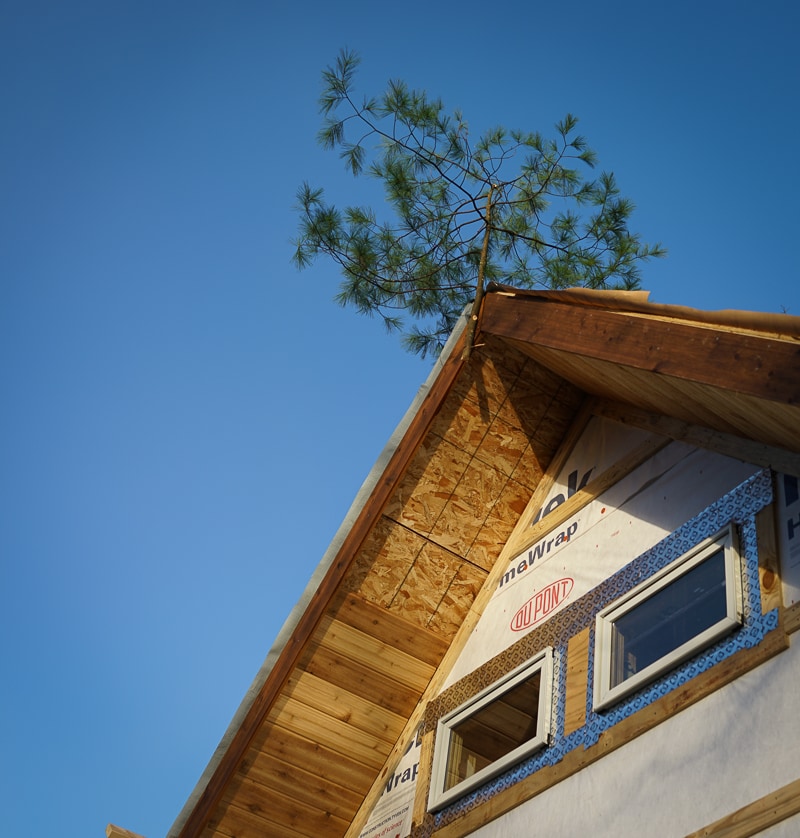
One of the more well-known timber traditions involves nailing a bough or small evergreen tree to the highest point of the timber frame. According to Fine Homebuilding Magazine,
The ritual serves two purposes. One pays homage to all the trees that went into the construction of the house, and to the many hands that built it. The other symbolizes the establishment of the house’s roots, which will nourish a long and prosperous life. The young tree is called a “wetting bush”, likely derived from the German tradition of watering it as a sign of the home’s first nourishment.
So, who gets to set the wetting bush? The youngest carpenter present.
The Barn Raising
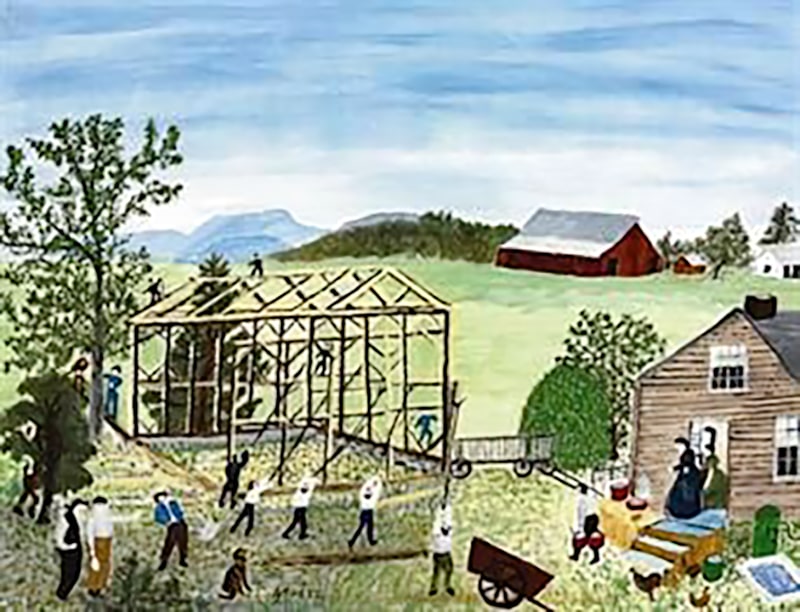
Of course, this might refer to a home, an outbuilding, or even a post and beam shed, but Barn Raising evokes an image familiar to most of us–a community coming together to accomplish something big.
In the “olden days” the individual timbers for a house or barn would be cut and fitted by just a few men or a family. When all the individual walls were ready, the whole community would come together to raise the walls into position and set the rafters and ridge beam in place. This would be done using gin poles, ropes and pulleys, and of course, strong men. Although hard physical labor was required, “many hands make light work”, and the day ended with a celebration and party. The wives and children participated and a feast was held. There’s a real nostalgia in the thought of honest labor and participation in a feat that none of the individuals could have accomplished alone.
The Group Photo
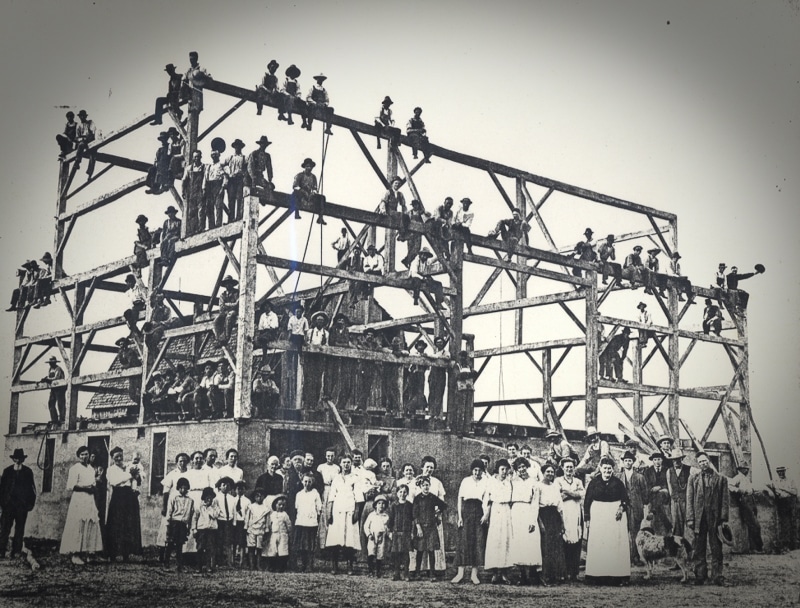
This doesn’t happen when the sheetrock goes up…but once the last timber is raised and pegged, the moment is documented with a photograph. Why? Perhaps because timber framers often feel that the timber frame will never be more beautiful than at that moment (before it is covered by walls and a roof), perhaps because all present sense that this structure will outlast every one in the picture.
Feeding the Framers
Whether it’s a tradition, or simply good manners, timber framers always appreciate a hearty meal! So they perpetuate the superstition that feeding the crew will bring the building (and Owners) good luck…
Slaking the Framers’ Thirst
A French tradition, courtesy of Charpentiers Sans Frontières (Carpenters Without Borders), is to give the lady of the house the honor of pounding in the last peg. She is expected to owe the crew one drink for every blow of the mallet required to drive the peg home.
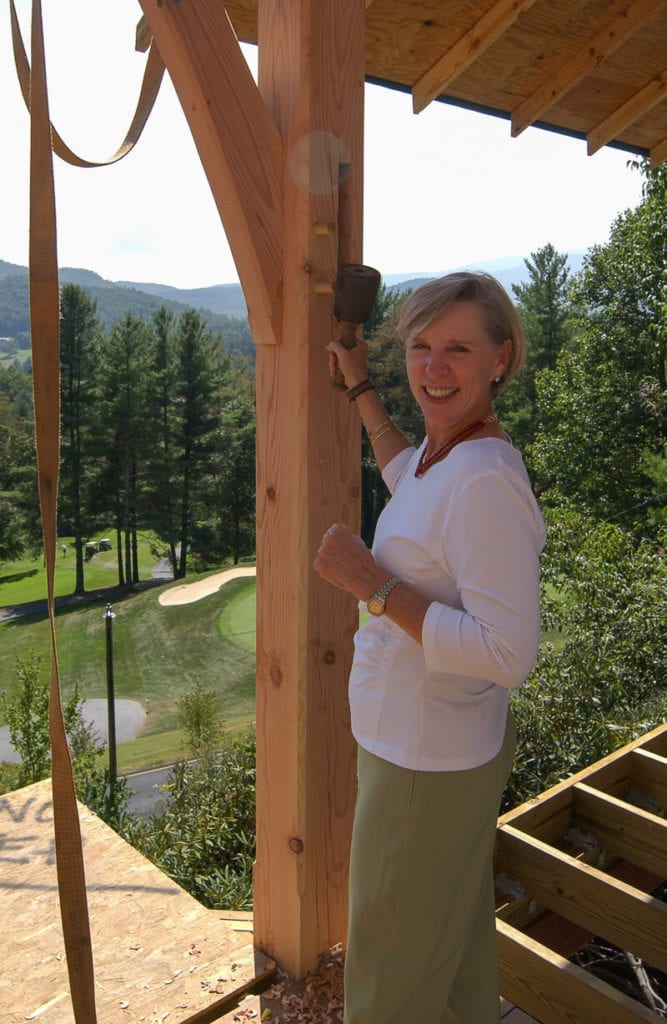
Using a Coin to Date the Building
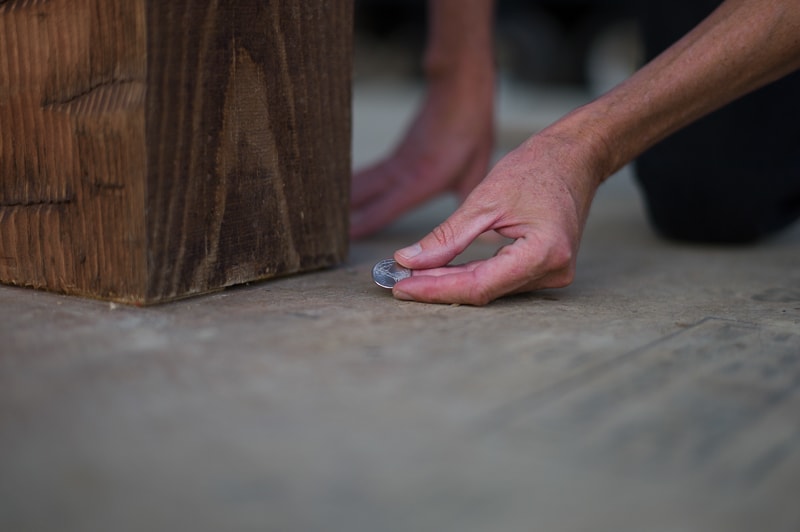
Think of this as a very abbreviated time capsule! A coin minted the same year as the structure is built is placed under a post, where it (presumably) will not be found until the building is dismantled (and hopefully the timber frame reclaimed).
Carving the Date
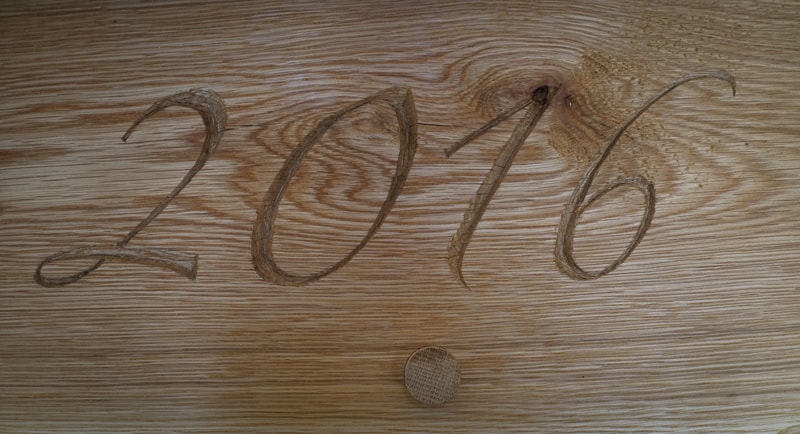
The date of completion is carved into the frame. This may be done in a visible and conspicuous place, such as over a doorway, but it might also be done in a less obvious spot. For example, some timber frame companies carve the date in the location on the frame closest to where the home shop is located. In our case, the date would be carved on the side of the building closest to West Jefferson, North Carolina.
Signing the Frame
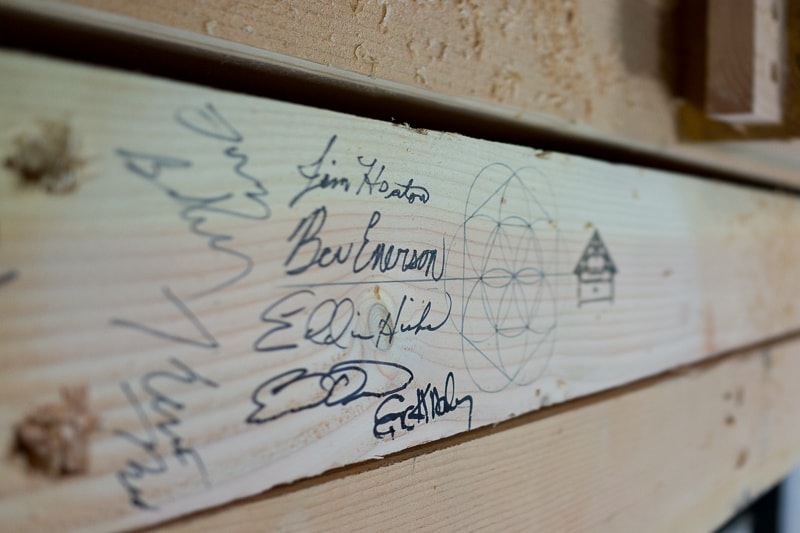
All the timber frame craftsmen (and craftswomen) who worked on the frame sign one of the timbers in a hidden place where it may lie undiscovered for a century or more.
Topping Out in Space

One of our clients worked for NASA and sent a photograph of Mission Specialist Joe Tanner topping out the International Space Station. The evergreen tree represents the highest point (top of the P-6 integrated truss structure) of the ISS.
Learn More: Our Timber Frame Glossary